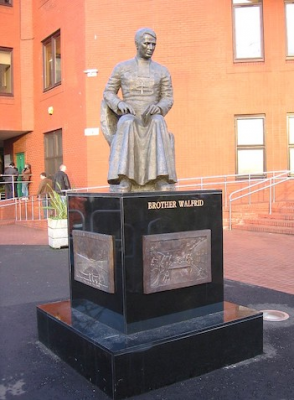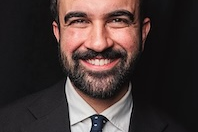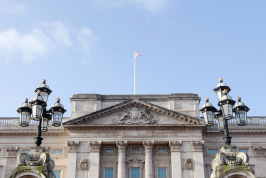Remembering Br Walfrid, founder of Celtic Football Club

Br Walfrid statue at Celtic Park
How a young man born in the small town of Ballymote in the north-west of Ireland founded Celtic Football Club in Glasgow in 1888 is not that well known in 2024 - except where he is commemorated in both Glasgow and Ballymote. That man is Brother Walfrid.
Andrew Kerins was born on 18 May 1840 to John and Elizabeth Kerins in Ballymote, Co Sligo. At that time of poverty and the Great Famine in Ireland, emigration was the natural route for young men. At 15 years of age, Andrew headed on a coal boat to Glasgow to where thousands of his fellow country men and women had gone, generally as farm labourers. Initially, he worked on the railways.
It is unknown how his family fared during the famine years of 1845-1852 but as rural dwellers dependent on the land, it is likely they suffered greatly because the West of Ireland was one of the regions that suffered the most.
In 1864, he joined The Marist Brothers, a teaching order founded at Lyon in France, taking the name Brother Walfrid. He was sent to study at the order's house at Beauchamps in northern France where he spent four years before he returned to Glasgow. He taught at St Mary's School and the Sacred Heart School where he was appointed headmaster in 1874. He also helped found St Joseph's College in Dumfries.
As a teacher at St Mary's and then as headmaster at Sacred Heart School in Bridgeton, he witnessed first-hand the full extent of the plight of the poor, the needy, the starving and the suffering. The children of this misery were, however, his prime concern. Aside from educating the children of the slums, he also sought to feed and clothe them as thousands of Irish missionaries would do in later decades in Africa and elsewhere. To do so, he was instrumental in establishing, in 1884, the 'Penny Dinners' for his poverty-stricken pupils and the children of his parish to ensure that they would get at least one meal a day.
In 1888, conscious of the prevailing poverty, he founded The Celtic Football Club as a means of raising funds for the poor and deprived in the east end of Glasgow. The club played their first match in the newly built Celtic Park in May 1888. It was a friendly against Rangers, and Celtic won 5-2 in front of a crowd of 2,000 spectators. The club was located on land owned by a rich aristocrat who, when he saw the success of the club, decided to cash in by increasing the rent of £50 to £450 over a few years. But the Irish were too smart for that type of extortion.
Four years later, the club re-located when the first sod was turned by another Irishman and founder of the Irish Land League, Michael Davitt, who became the first patron of the club. The silver spade used to perform the ceremony was presented to Davitt as a present, and he remained a strong supporter of the Club and its ideals throughout his life. It is remarkable the Br Walfrid was from a rural area in Co Sligo and Davitt was born in the rural famine-stricken area of Straide in Co Mayo where an informative museum now commemorates his memory, including his involvement with Celtic Football Club.
As an admirer of the diverse work and legacy of Davitt, I was honoured to serve as Chairman of the Michael Davitt Memorial Committee in the early 1980s during which I collected many of the historical pieces housed in the museum (www.michaeldavittmuseum.ie/).
The Celtic Club was supportive of Davitt's work. On 21 June 1892, from his home in Ballybrack, Co. Dublin Davitt wrote to the Trustees of the National Fund enclosing a cheque for £30 as a donation from the Club "for the relief of the evicted tenants" from their homesteads in rural Ireland. He wrote that "the members of this renowned athletic association are young Irishmen who are generous supporters of every national and good cause."
In setting up Celtic Club, Br Walfrid was influenced by another pioneering Irish priest, Canon Edward Hannan, who with others had established Hibernian Football Club in 1875 in Edinburgh exclusively to cater for the large Irish population there, known as Little Ireland. Hannan was born in Ballingarry in Co. Limerick on 21 June 1836 and was ordained in All Hallows College, Dublin in 1860 where he had been sponsored by Bishop Gillis of the Eastern District of Scotland.
Arriving in Edinburgh in 1861, he did much to address the social problems of the poorer Catholics in the city and in 1865 he founded a local branch of the Catholic Young Men's Society that had been founded in Ireland in 1849 by Monsignor Richard O'Brien who taught in All Hallows College. Hannan died prematurely from pneumonia on 24 June 1891 and was buried in Grange Cemetery in southern Edinburgh where a high Celtic marble memorial was erected and was restored in 2006 by the Hibernian Historical Trust. Br Walfrid would have been aware of Hannan's social and football endeavours in Edinburgh and how the Hibernian Football Club had become a symbol for the Irish in Scotland where they were not always welcome.
A significant date was 12 February 1887 when Hibernians won the Scottish Cup, the country's premier and most coveted trophy, by defeating Dumbarton 2:1 at Hampden Park, Glasgow. During the jubilant celebrations in St Mary's Hall, the Secretary of Hibernians, John McFadden joked that Glasgow should do what Edinburgh had done with an Irish football team. That was the spark the spurred Br Walfrid into action with a meeting held on 6 November 1887 setting in motion the establishment of Glasgow Celtic.
The club was more than a sports enterprise. A circular noted that the club's "main object is to supply the east end conferences of the St Vincent de Paul Society, with funds for the maintenance of the 'dinner tables' of our needy children in the missions of St Mary's, Sacred Heart and St Michael's". Here, we see Br Walfrid, inspired by his Catholic values, using sport not just for its own benefit but to support an essential social cause for needy in the community.
In 1893, Br Walfrid was transferred by his superiors to Spitalfields school in East London. There he continued his work, organising football matches for and showing great kindness to the barefoot children in the districts of Bethnal Green and Bow where he founded the charity called The Poor Children's Dinner Table. He oversaw the transfer of the Marist Brothers' Novitiate House from Beauchamps in France to Kent. With failing health, he spent his latter years in Scotland.
He died on 17 April 1915 and was survived by a brother, Bernard, in Cloghboley, Co Sligo. He is buried in the Mount St Michael Cemetery in Dumfries, Ayshire. On 5 November, a 10ft high commemorative sculpture of him cast in bronze with its pedestal carved from black granite was erected outside Celtic Park at a cost of £30,000 which was funded by donations raised by the Brother Walfrid Committee. It is not unusual to see it adorned with green and white club scarves in advance of matches. The statue is a fitting tribute to the Irishman who had the vision to establish the club whose sole objective was to help the less well-off in society.
On 26 August 2011, the Celtic Graves Society held a ceremony in Mount St Michael Cemetery to commemorate Br Walfrid. The theme of the ceremony was his wish and achievement: "A football club will be formed for the maintenance of dinner tables for the children and unemployed." That wish was grounded in his experience of having lived as a very young child through the horrific famine of 1845 - 1852 which was a period of starvation and disease in Ireland and which created an un-precedented social crisis and had a huge impact on Irish history. He was a man who was haunted by that which he had witnessed in Ireland when the potato crop - the stable food - failed.
In his home-town of Ballymote, another sculpture in the form of a bust of him sitting on a stone column was unveiled in the public park there also in 2005. The Brother Walfrid Memorial Park, also known as Corran Park, is the home of Ballymote Celtic. The club's badge, with its four-leaf clover, appears behind the bust. So, his home-town is keeping his memory alive over one hundred years after his death and well into the future.
The legacy of Irish missionaries stretches far and wide. It is so varied and diverse that it is impossible to measure it as I discovered when researching my book - "The Legacy of Irish Missionaries Lives On". But one thing is sure… their legacy continues in so many areas of life and human endeavour.
Matt Moran is a writer and author living in Co Cork. He has published 'The Legacy of Irish Missionaries Lives On' with a Foreword by Mary Robinson, and 'The Theology of Integral Human Development' with a Foreword by Dr David Begg - both available from www.buythebook.ie. A former Chairman of the Board of Misean Cara, and Member of the Board of Nano Nagle Birthplace, he is currently working on another book 'The Cultural Colonisation of Africa by the West'.


















